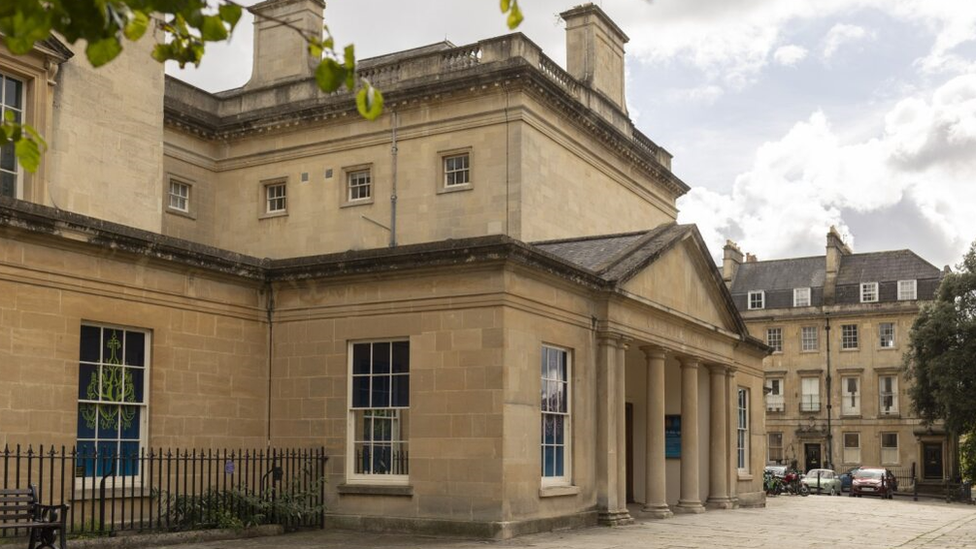Hampshire: 18th Century stained glass returns to gothic tomb
- Published
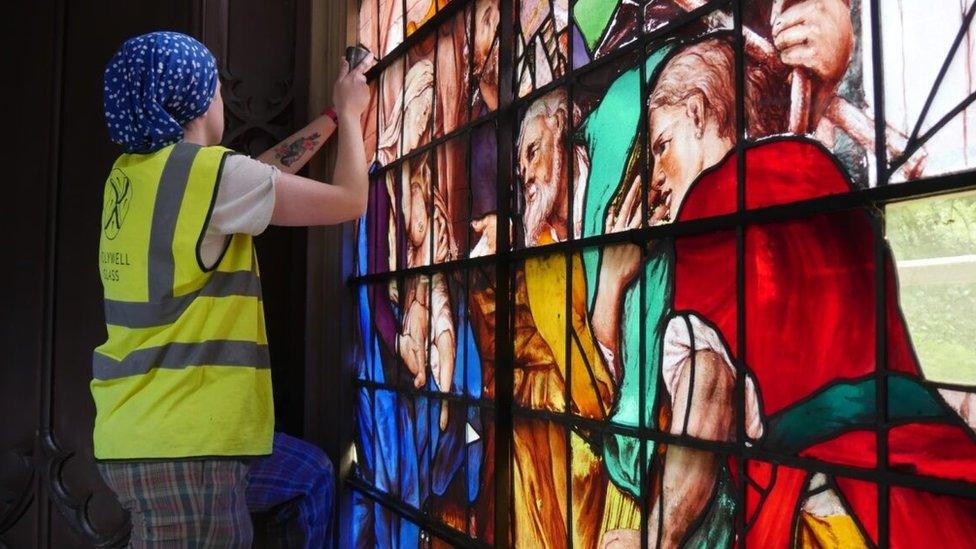
The glass, designed by craftsman John Rowell, dates back 250 years
Some of the rarest surviving 18th Century stained glass in Britain has been refitted at its gothic tomb.
The National Trust returned the artwork to The Vyne in Basingstoke, Hampshire, after it was removed for conservation.
The charity believes climate change has increased weathering on the glass, which dates back 250 years.
The piece, designed by craftsman John Rowell, has been covered with a protective glazing as part of the work to conserve it.
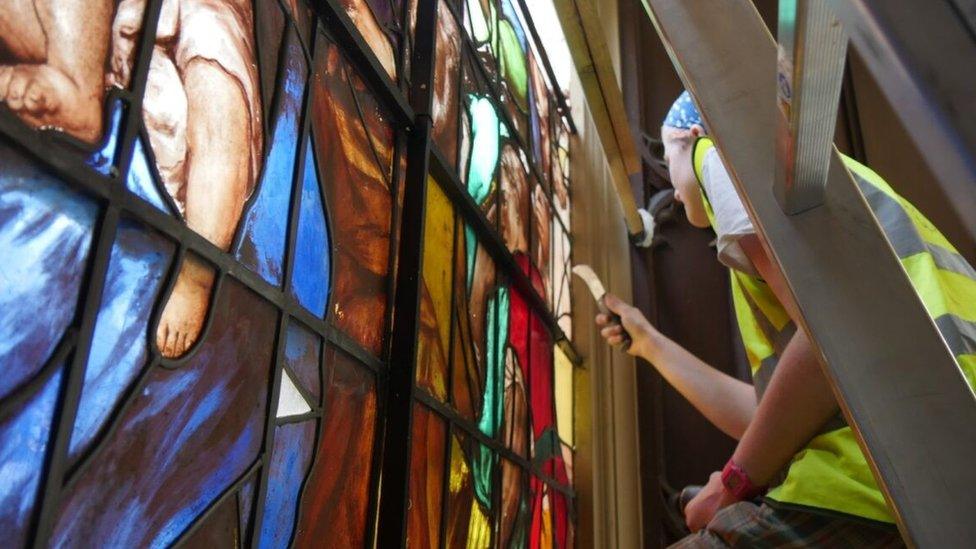
The glazing work was carried out by specialist conservators
A National Trust spokeswoman said: "Originally a plumber, Rowell was a self-taught glass-maker and although accomplished, his paint was not durable enough to have withstood the test of time and would 'vanish' from the glass.
"Very little of his work remains and, recently, climate change has exacerbated the fragile condition of the window, causing the painted detail to flake, lead-work to warp and leak, and cycles of condensation to eat away at the surface of the glass."
The glass window, which depicts the Adoration of the Shepherds after Van Dyck, is considered to be the most important surviving example of Rowell's work.
The trust added: "The window is one of two stained glass panels in the tomb chamber to receive protective glazing.
"The second, which depicts the same scene, was made by Rowell's great rival and another prominent glass-maker, William Price."
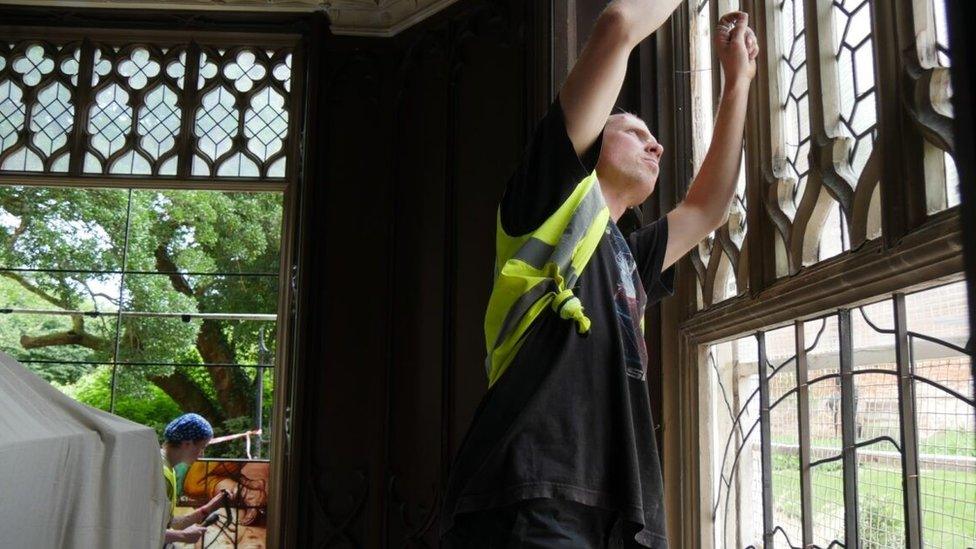
The two windows in the tomb have been covered in glazing for protection
Dominique Shembry, National Trust curator at The Vyne, said: "It's wonderful to see these two beautiful windows back in their rightful place, looking so clean and free from mould."
The Vyne was transformed from a cluster of medieval buildings into a Tudor palace between 1500 and 1520 by William Sandys, who became Lord Chamberlain to Henry VIII in 1526.
The ostentatiously designed tomb chamber, which remains empty, was created as a family mausoleum by John Chute in the 1770s.
The glazing work was carried out by specialist conservators Holy Well Glass of Wells, Somerset.

Follow BBC South on Facebook, external, X, external, or Instagram, external. Send your story ideas to south.newsonline@bbc.co.uk.
Related topics
- Published12 February 2024
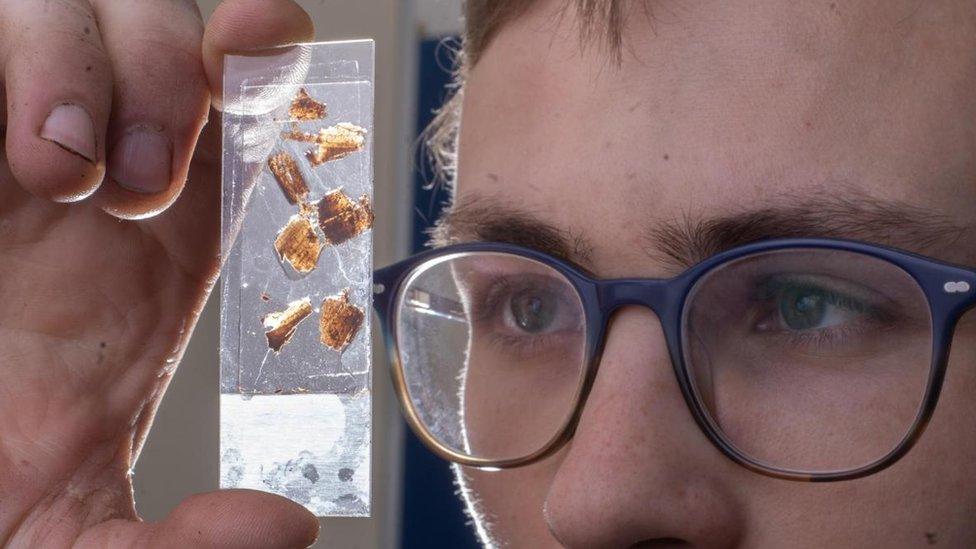
- Published27 January 2024
